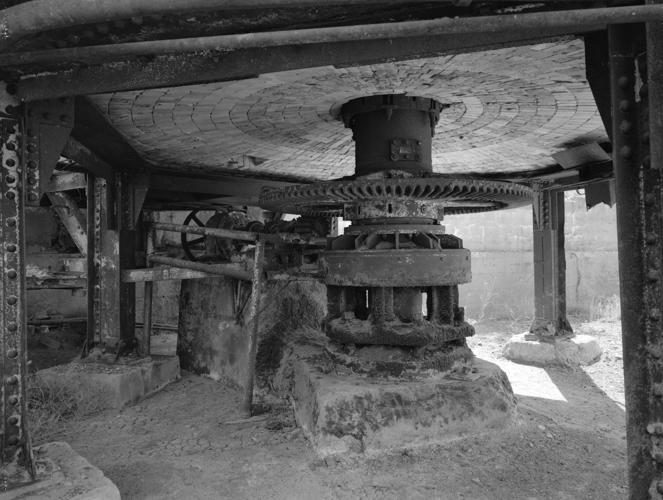Principal vanadium production in Arizona has come from the Four Corners area in northeastern Arizona and Mammoth located in southeastern Arizona.
The Four Corners area is the far greater producer, having accounted for 90 percent of Arizona vanadium output from vanadium-uranium deposits in sandstone. The ore averages 1 percent or more of vanadium, making it enough to mine at a profit.
Several notable locations include the Morrison Formation in the Carrizo Mountains, Chilchinbito areas and the Chinle Formation in the Monument Valley area of Apache and Navajo counties.
Considered a byproduct of uranium mining, vanadium is a metal element highly sought after because of its application as a strengthening agent for steel. It has also been used in nonferrous alloys and chemicals. Vanadium pentoxide, an important compound of vanadium, has commercial qualities as a catalyst for industrial reactions, including a coloring agent for ceramics and glass, and as a dye for textiles.
The discovery of radium by Marie and Pierre Curie in 1898 and subsequent discovery of its ability to slow cancerous growths led to a heightened effort to mine the uranium ores that contained this new element. Carnotite deposits were actively mined in southwestern Colorado and southeastern Utah to fill the great demand after 1910. Carnotite, a bright yellow mineral also known as a potassium uranium vanadate, is also an ore of vanadium and uranium.
In 1918, John F. Wade made discoveries of uranium/vanadium mineral outcrops in the Carrizo Mountains located in northeastern Arizona. A congressional act passed in June 1919 opened the Navajo reservation up to prospecting and mining. By the end of 1920, Wade’s Radium Ores Co. had shipped 40,000 pounds of ore bearing radium, uranium and vanadium to a purchasing station near Naturita, Colorado. However, because of lack of demand for domestic vanadium, they were not fully exploited until World War II, during the federal government’s vanadium purchasing program.
Five leased properties in the northern and western Carrizo Mountains produced 11,205 tons of vanadium-bearing ore. The Atomic Energy Commission added further momentum to postwar mining of vanadium and uranium from 60 leased properties, involving 73,118 tons of ore.
Lured by a brightly colored outcrop of uranium-vanadium minerals in the Monument Valley area that later became the Monument No. 2 mine, the Vanadium Corp. of America first leased the property from the Navajo Indian Tribal Council in 1942.
Some vanadium ore was produced during World War II, but significant production occurred as a byproduct during the postwar years to fulfill the nation’s uranium need in 1948.
Peak production in Monument Valley occurred in 1955, with 14 mines in operation, adding to a U.S. consumption of nearly 2,000 short tons a year throughout the decade. Upon the closure of the Monument Valley mines in 1969, a reported production of 24,780,000 pounds of vanadium was recovered from concentrates.
Vanadium has also been acquired from vanadate-type deposits consisting of lead, zinc or copper vanadates found in oxidized zones. Examples include the Mammoth-St. Anthony Mine, Mammoth district, Pinal County, which provided 2.5 million pounds of vanadium in 1934-1944. The Defiance Mine, in nearby Globe, is credited with shipping 20 tons of ore containing 5,577 pounds of vanadium.
The C & B Mine in the Dripping Spring Mountains also shipped a small amount of vanadium ore during World War II.
Ore recovery was undertaken out of state at mills in Durango, Monticello, Naturita and Shiprock. The vanadium acquired in this process was either purchased by the steel industry or by the Atomic Energy Commission. By the early 1970s, declining demand and market prices caused many vanadium and uranium mines to close.
Mining rights have since reverted back to the Navajo Nation.
Challenges and concerns today surround excessive exposure to radiation among the Navajo population from abandoned uranium/vanadium mines. Recent efforts undertaken by the U.S. Department of Energy have included the Abandoned Uranium Mine Project involving field work and aerial reconnaissance to identify radiation sources. This has contributed to methods to mitigate the amount of radiation exposure caused by consumption of water mixed with radioactive metals and excessive exposure of mine waste rock through extensive land remediation.





